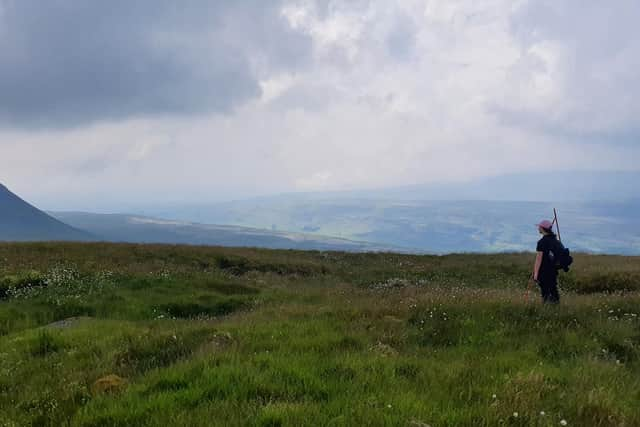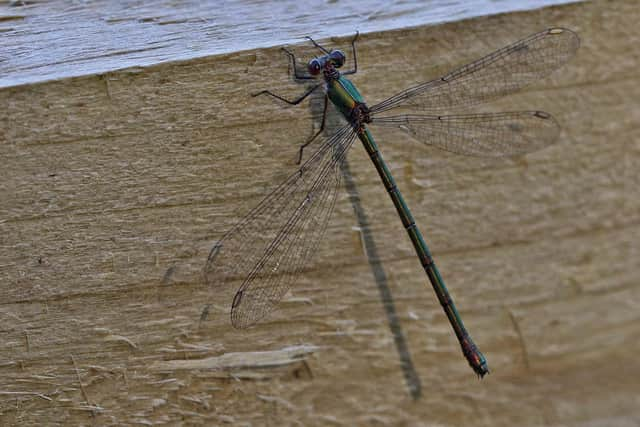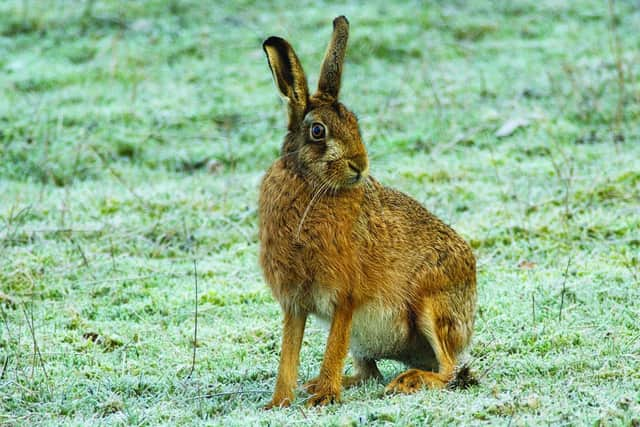Yorkshire Wildlife Trust celebrates nature successes in 2022 with some surprising encounters
The region’s wildlife charity cares for more than 100 nature reserves including Potteric Carr in Doncaster, Adel Dam in Leeds and Flamborough Cliffs, and is working for a wilder Yorkshire by restoring habitats for wildlife, protecting species and leading in managing and advising on the impacts of a changing climate.
Some of the highlights from South Yorkshire included rare black-winged stilts delighting birdwatchers by breeding for the first time in Yorkshire raising four young at the Trust’s Potteric Carr reserve, green oasis, and remnant of ancient fenland on the edge of Doncaster.
Advertisement
Hide AdAdvertisement
Hide AdA female osprey spent two weeks at Sprotbrough reserve near Doncaster in October, during her migration south back to Africa, drawing crowds eager to see a rare osprey sighting in the area.


Also at Potteric, marsh stitchwort was re-found on the reserve for the first time in 40 years. Willow emerald damselflies were spotted for the first time and the reserve now supports 905 species out of the 2500 species of UK moths.
Other unusual visitors to wetland reserves including glossy ibises, spoonbill and spotted crakes to reserves in north and east Yorkshire, a sign of our changing climate and the migration of species north in search of supportive habitat.
In North Yorkshire, Yorkshire Peat Partnership completed restoration plans for more than 40,000 hectares of blanket bog in Yorkshire; an area just over the size of the Council area of Bradford, with a further 2000 hectares funded for 2023.
Advertisement
Hide AdAdvertisement
Hide AdThe Trust completed a three-year project to improve water quality on the River Wiske with the Environment Agency and landowners, creating new and improved riverbank and wetland habitat for wildlife and support for local farmers.


The Wild Ingleborough partnership continued into its third year, increasing the existing 1200 hectares of new land large-scale landscape restoration by 420 hectares. The team and volunteers also planted more than 66,000 native trees, creating one of the first examples in England of re-establishing the natural tree line by helping natural habitats spread across the mountainside.
In East Yorkshire, a partnership to restore 74 acres of seagrass meadow and reintroduce half a million oysters into the Humber with Orsted has started, with the goal of storing large amounts of carbon and improving water quality.
18 Nofence collars were fitted to highland cattle, meaning the Trust are now able to conservation-graze areas that were not able to be fenced and therefore couldn’t be safely grazed, already having a noticeably positive effect on biodiversity at Spurn, Wheldrake Ings and Brockadale nature reserves.
Advertisement
Hide AdAdvertisement
Hide AdA record-breaking 80 minke whales were spotted on August 28 off the north Yorkshire coast by one of the Trust’s sea watch observers alongside members of the public.


It’s been a good year for brown hares, with anecdotal evidence from work on the Wolds and speaking with other landowners improving areas for habitat, suggesting numbers are on the rise.
Over in West Yorkshire, a population of rare white-clawed crayfish was found thriving in enclosed Luddenden Brook in Calderdale, previously thought lost in Yorkshire after they were last seen in 2014.
The Trust completed a significant project at Adel Dam in Leeds with funding from Biffa and visitors to the reserve next to Golden Acre Park can enjoy new visitor hides, trails and information.
Advertisement
Hide AdAdvertisement
Hide AdThe Bradford Urban Discovery Project and Nature Friendly Schools project finished having worked with 44 schools across Bradford, Huddersfield, Leeds, Wakefield, Barnsley, Doncaster, Hull, York and Bridlington, running 232 education sessions and engaging 7675 people.
Rachael Bice, Chief Executive of Yorkshire Wildlife Trust, said: “Yorkshire is home to some wonderful wildlife and wild places, some of it unique and all of it truly special. We’re so proud to care for wildlife from the peatlands of the Dales right across to the marine wildlife of the North Sea, from rare bitterns, black-winged stilts, and water voles through to our more common hedgehogs, finches and seabirds.
“We thank all our wonderful members, partners, visitors and volunteers for their ongoing support which has allowed us to make such a difference to our wildlife and wild places, even in hard times..
"We go into 2023 optimistic about our plans for a wilder Yorkshire.”
